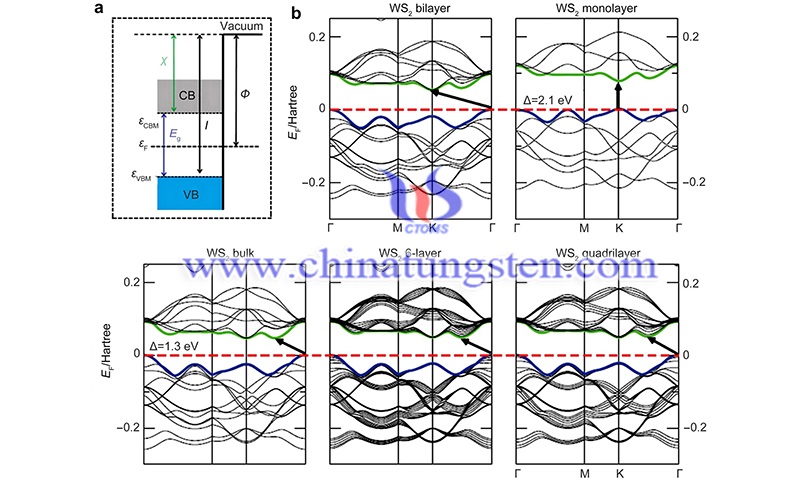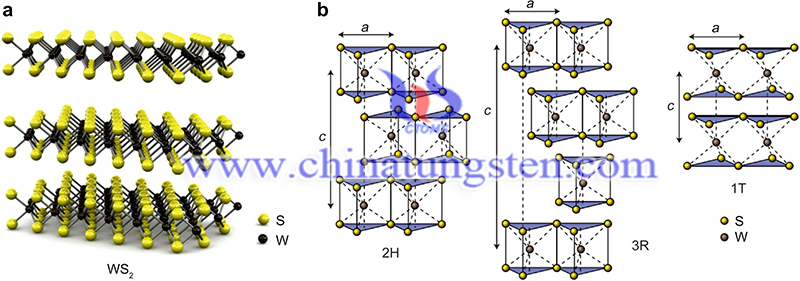Tungsten Disulfide Nanomaterials Applied in Energy Conversion and Storage
- Details
- Category: Tungsten Information
- Published on Monday, 22 August 2022 20:38
Due to the rapid growth of the global population and rapid socio-economic development, energy and environmental issues have received widespread attention. As a transition metal disulfide, tungsten disulfide nanomaterials have made important research advances in the field of energy conversion and storage. Given the versatility and rich microstructure of these materials, the plasticity and controlled synthesis of tungsten disulfide (WS2) nanomaterials are of interest to researchers.
In recent decades, the problems of energy shortage and environmental pollution have become increasingly prominent. The development of sustainable clean energy and related technologies is considered to be a top priority for all countries. Since most sustainable clean energy sources are highly dependent on time, regional and weather factors, there is a need to develop relevant energy conversion and storage devices to efficiently store these intermittent energy sources.
In the field of energy conversion, electrocatalytic hydrogen evolution is considered a promising approach to developing renewable and clean energy sources. However, conventional electrocatalytic platinum catalysts face high costs and low reserves, which limit the development of electrocatalytic hydrogen evolution technology. In addition, photocatalytic hydrogen evolution or pollutant degradation as a new way to utilize solar energy has broad application and research prospects in solving energy and environmental problems.

Currently, finding a suitable catalyst to improve the efficiency of sunlight utilization for photocatalysis is still a challenge. In the field of energy storage, secondary ion batteries (e.g., lithium-ion and sodium-ion batteries) and supercapacitors play an important role; however, electrode materials for secondary ion batteries and supercapacitors still face challenges. For example, despite their high electrical conductivity, conventional carbon materials for batteries and supercapacitors have the disadvantages of low specific capacity, low bulk energy density, and poor cycling performance.
Given this set of challenges, efforts have been made to investigate catalyst and electrode materials with excellent properties. Due to their large surface area, a series of two-dimensional (2D) layered transition metal dichloride (TMDC) materials have attracted great interest due to their low cost, chemical and thermal stability, and good processability. Among them, tungsten disulfide nanomaterials are represented by their intrinsic crystal structure, tunable electronic band structure, and morphology.
Specifically, firstly, WS2 has three crystal structures: triangular (1T), hexagonal polycrystalline (2H), and rhombohedral (3R), which can be used in various fields. Second, the band gap can be adjusted from bulk layers to monolayers as the number of layers decreases. Third, WS2 nanomaterials exhibit diverse morphologies, mainly including nanosheets, inorganic fullerene-like structures (IF-WS2), nanotubes (NT-WS2), nanospheres, nanowires, nanorods, and nanoflowers.
Due to these inherent properties, WS2 nanomaterials exhibit good photocatalytic and electrocatalytic properties in the hydrogen evolution reaction (HER), which makes them potential photocatalytic and electrocatalytic materials.

In addition, the researchers have investigated several modification methods to improve its optical and electrical properties. For example, the phase transition from semiconductor to metallic phase can be achieved by crystalline phase modulation, thus many active sites can be exposed by morphological logic modulation, which can improve the photocatalytic and electrocatalytic properties of WS2.
By constructing hybrids (doping and compounding), synergistic effects can be exploited to enhance the electrical conductivity and various electrochemical properties of WS2 nanomaterials. Based on these advantages, WS2-based nanomaterials have yielded some encouraging results for energy conversion and storage applications. For example, previous studies have shown that WS2 nanoparticles in the form of WS2 nanoparticles exhibit good electrocatalytic activity and stability.
In addition, the tungsten disulfide nanomaterials possess strong photocatalytic activity in UV and visible light, indicating that it is a unique and valuable broad solar spectrum photocatalyst. In addition, the ultrathin WS2 nanosheets possess high specific capacity and great cycling stability when used as anodes for lithium-ion batteries. Thus, WS2 nanomaterials show great promise for applications in electrocatalysis, photocatalysis, batteries, and supercapacitors.
Article Source: Sun, CB., Zhong, YW., Fu, WJ. et al. Tungsten disulfide-based nanomaterials for energy conversion and storage. Tungsten 2, 109–133 (2020).
- Tungsten Manufacturer & Supplier, Chinatungsten Online: www.chinatungsten.com
- Tungsten News & Prices of China Tungsten Industry Association: www.ctia.com.cn
- Molybdenum News & Price: news.molybdenum.com.cn
- Tel.: 86 592 5129696; Fax: 86 592 5129797; Email: sales@chinatungsten.com



 sales@chinatungsten.com
sales@chinatungsten.com